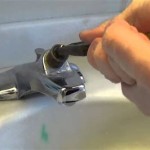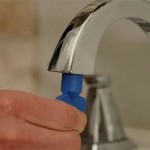How To Remove Old Grout From Bathroom Floor Tiles
Removing old grout from bathroom floor tiles is a common maintenance task that can significantly improve the appearance and longevity of a bathroom. Over time, grout can become discolored, cracked, or even harbor mold and mildew. Replacing the old grout revitalizes the tiled surface and prevents further damage to the underlying substrate. This process, while potentially time-consuming, is manageable with the correct tools and techniques. The following outlines a comprehensive approach to removing and replacing grout from bathroom floor tiles.
Preparing for Grout Removal: Safety and Materials
Before commencing the grout removal process, prioritizing safety and gathering the necessary materials is crucial. The grout removal process can generate dust and debris which may be harmful to inhale or come into contact with. Safety glasses are essential to protect the eyes from flying particles. A dust mask or respirator is vital to prevent inhalation of grout dust, especially if dealing with older grout that may contain asbestos (always consult with a professional for asbestos testing and removal). Wearing gloves protects the hands from abrasion and potential chemical irritants from cleaning solutions.
Next, gather the necessary materials. A grout removal tool is paramount. Several options exist, including manual grout saws, electric grout removal tools, and oscillating multi-tools with grout removal attachments. Manual grout saws are inexpensive but require significant physical effort. Electric grout removal tools offer greater speed and efficiency but are more expensive. Oscillating multi-tools with specialized grout removal blades represent a balance between cost and efficiency. Aside from the grout removal tool, a utility knife, a stiff-bristled brush, a vacuum cleaner with a hose attachment, a sponge, and a bucket of clean water are also needed.
Furthermore, consider the type of grout being removed. Epoxy grout is significantly harder and more resistant to removal than cement-based grout. Epoxy grout often requires more aggressive techniques and specialized tools. Identify the grout type if possible to ensure the appropriate tools and techniques are employed. If unsure, starting with a less aggressive approach and gradually increasing the intensity is recommended.
Protecting surrounding surfaces is essential. Cover nearby fixtures like toilets and vanities with plastic sheeting to prevent dust and debris from accumulating. Lay down drop cloths on the floor to protect the surrounding areas from scratches and damage caused by dropped tools or grout fragments.
Removing the Old Grout: Techniques and Best Practices
The grout removal process requires patience and precision. Rushing the process can lead to damage to the tiles. Begin by scoring the grout line with a utility knife. This helps to create a clean edge and prevent chipping of the tile during grout removal. The utility knife should be held at a slight angle and run along the entire length of the grout line. This step is particularly important for tiles with delicate edges.
Using the chosen grout removal tool, carefully remove the old grout. For manual grout saws, apply consistent pressure and saw back and forth along the grout line. Avoid applying excessive force, as this can damage the tiles. For electric grout removal tools and oscillating multi-tools, follow the manufacturer's instructions carefully. Hold the tool at a slight angle and move it slowly and steadily along the grout line. Again, avoid applying excessive pressure. It is better to make multiple passes than to try to remove all the grout in one attempt. Regular cleaning of the blade or saw is crucial to maintain effectiveness and prevent clogging with grout dust.
When using an oscillating multi-tool, select a grout removal blade that is slightly narrower than the grout line. This prevents the blade from contacting the edges of the tiles and causing damage. Start at a low speed and gradually increase the speed as needed. Maintain a firm grip on the tool and keep it moving to prevent overheating and damage to the blade. Avoid pressing down too hard, as this can cause the blade to bounce or skip.
For stubborn grout, consider using a grout softener. These chemical solutions help to break down the grout, making it easier to remove. Apply the grout softener according to the manufacturer's instructions and allow it to sit for the recommended time. Be sure to test the grout softener on an inconspicuous area of the tile first to ensure it does not damage or discolor the tile. Always ensure adequate ventilation when using chemical grout softeners.
After removing the bulk of the grout, use a small hand tool, such as a dental pick or a small screwdriver, to remove any remaining pieces of grout. Pay particular attention to the corners and edges of the tiles. Vacuum up the loose grout and debris frequently to maintain a clear working area. A vacuum with a hose attachment is especially useful for reaching into tight spaces.
Cleaning and Preparing for New Grout: Achieving a Smooth Finish
Once the old grout has been removed, thorough cleaning is essential before applying new grout. This ensures proper adhesion and prevents future problems. Vacuum the entire area thoroughly to remove all remaining grout dust and debris. Use a stiff-bristled brush to scrub the tiles and grout lines. This helps to loosen any remaining particles and prepare the surface for cleaning.
Wash the tiles and grout lines with a solution of warm water and a mild detergent. Avoid using harsh chemicals or abrasive cleaners, as these can damage the tiles. A neutral pH cleaner is a safe and effective option. Use a sponge or cloth to wipe down the tiles and grout lines. Rinse thoroughly with clean water to remove all traces of the detergent.
Inspect the tiles for any cracks or damage. Repair any damaged tiles before applying new grout. Small cracks can be filled with epoxy filler. Larger cracks may require replacing the entire tile. Allow the tiles to dry completely before proceeding.
Before applying the new grout, consider applying a grout sealer to the edges of the tiles. This helps to prevent the new grout from staining the tiles. Use a grout sealer that is compatible with the type of tile being used. Apply the grout sealer according to the manufacturer's instructions and allow it to dry completely before applying the new grout.
Finally, ensure the grout lines are completely free of any debris or obstructions. Use a small brush or vacuum to remove any remaining particles. A clean and dry surface is essential for proper grout adhesion and a long-lasting result. Once the surface is prepared, you are ready to apply the new grout according to the manufacturer's instructions.

How To Remove Old Grout

Can I Put New Grout Over My Old The Medic

How To Regrout Tiles Without Removing Old Grout

How To Remove Dried Grout From Tile Alliance Flooring Directory

The Definitive Grout Repair Guide 5 Steps True Value

7 Most Powerful Ways To Clean Tiles Grout Naturally

The Only Way We Got Our Stained Grout White Again Young House Love

How To Clean Grout Tile Cleaning Tips Simply Spotless

How To Clean Grout Cleaning Stains

How To Get Rid Of Leftover Grout Haze Quickly And Easily The Creek Line House
Related Posts







